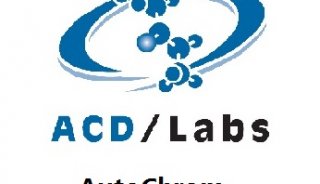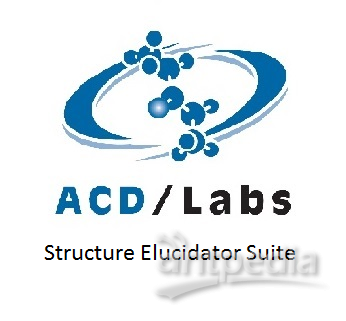Effect of UV Treatment on Early Development of Sea Urchin Embryos
Objective: Background: and go through the animal and vegetal poles. The subsequent cleavages separate the cells into mesomeres, macromeres, and micromeres. Sea Urchins undergo formation of the blastula and gastrulation before developing into a mature embryo. UV light is harmful to many organisms just as it is harmful to humans. Many eggs of marine animals including sea urchins have a high concentration of mycosporine amino acids that protect them from UV damage. Mycosporine amino acids are obtained through the diet of the adult and are stored in the egg. However, there is fear that the amphibians are declining because of the increased UV-B reaching the earth's surface. UV-A and UV-B reach the earth's surface. UV-B is increasingly hitting the earth's surface because of the depleting ozone layer. One of the more common effects of UV-B is adjacent thymidines condensing into cyclobutane pyrimidine dimers (CBPDs) which impede DNA replication and transcription. UV-C (200-280nm) is the most harmful type of UV to organisms, however, due to oxygen in the atmosphere absorbing the UV rays, UV-C never reaches the Earth's surface. The effects of ozone depletion are likely to be mostdevastating to organisms that are exposed to sunlight during their developmental stages. The sea urchin embryos aretransparent and poorly protected against UV. Sea urchins are exposed to UV radiation during all stages of their lifecycle.Sea Urchins like many organisms have DNA repair enzymes, photolyases. UV radiation causes direct damage to proteinsand DNA by creating the formation of pyrimidine dimers and crosslinks between DNA and protein. Consequences ofthese mutations are delayed cell divisions, DNA damage, developmental delays, and abnormalities. UV treatment cancause immediate effects by damaging microtubules and long term effect by damaging RNA and DNA.Experimental Design:1) Wash gametes in artificial seawater (ASW) 3 times2) Add 1ml of diluted sperm to the gametes in ASW (Fertilize gamates)3) Wait until more than 75% of the embryos undergo first cleavage (check for cleavage under compound microscope periodically) See Figure 1.4) Split the embryos into 4 open dishes labeled; 1min UV, 2 min UV, 5 min UV, Control5) Place the open dish with embryos labeled 1 min UV 3 1/2 inches under the hand held UV lamp and turn on the short wave lamp for 1 minute while wearing protective goggles6) Repeat for the two dishes labeled, 2 min UV, 5 min UV for times indicated7) Wait for the second cleavage to occur, take pictures with digital camera while under the microscope of the control embryos and the three experimental groups of embryos.8) Wait for the control embryos to hatch9) Come in the next morning look under microscope and take pictures of all 4 groups of embryos to compare stages of development and percentage of normally developed cellsFigure 1. Sea Urchin embryos during first cleavage when radiated with UV-C.Results and Discussion:At second cleavage, all the eggs that were radiated with UV for one minute looked normal. At second cleavage,most of the eggs that were radiated with UV for two minutes looked normal. A couple of eggs looked like Figure 2. Theyhad a cytoplasmic blip. At second cleavage, majority of the eggs that were radiated with UV for five minutes lookednormal. A handful of eggs looked the same as Figure 2. The UV did not seem to damage the embryos immediately; mostof the second cleavages were normal for all eggs in all the experimental exposure times.In the second part of the experiment, the embryos were observed after gastrulation. At that point the archenteronis visible, secondary mesenchyme cells are visible, and cells organized themselves into spicules. All the control eggswere hatched from the fertilization envelope and were ciliated as in Figure 3. All the embryos that were radiated with UVfor one minute had blastula and cilia and primary mesenchyme cells but no vegetal plate or vagination was observed.This is seen in Figure 4. All the embryos that were radiated with UV for two minutes looked the same as Figure 4 exceptone normal embryo was found. All the cells that were radiated with UV for five minutes looked the same as Figure 4. Allthe abnormal embryos had abnormally large amounts of cells in the blastocoel. All the cells radiated with UV-C seemdelayed in development or dead at the beginning of development of the vegetal plate. Most embryos did not undergogastrulation. The UV-C damages the embryos somewhere between the second cleavage and gastrulation. The amount ofexposure time to UV-C does not seem to determine the amount of development deformities. All the experimentalexposure times to UV-C embryos stopped developing after the formation of the blastula but before gastrulation. Thissuggests that the mycosporine amino acids do not help as much with protection against UV-C as they do with UV-B.Figure 2. Sea Urchin embryos radiated with UV-C at second cleavage with a cytoplasmic blipFigure 3. Control Sea Urchin embryos hatched from the fertilization envelope,ciliated, and undergoing gastrulation.Figure 4. UV radiated Sea Urchin embryos delayed development and excess cells in the blastocoel |




















